#directoire
Explore tagged Tumblr posts
Text
A rare portrait or Carnot


Well, not so rare anymore since I've now posted it.
It's a tiny 18 x 22 oil canvas kept in the Carnot family archives, reproduced on the back cover of the 1952 edition of M. Reinhard's Le Grand Carnot vol. II, of which you can see a picture I've taken with my phone camera on the left. In its special number about Lazare Carnot (1923), La Sabretache published a colored version of it (picture on the right).
I don't know much else about this portrait, not even whether Carnot had posed for it or not; what's certain is that one of his brothers didn't list it among his most accurate depictions. Still, the way Carnot is represented here matches with the physical descriptions given by La Révellière's in his mémoires.
Sources
M. Reinhard, Le Grand Carnot Vol. II (1952), p. 349-350
Centenaire de Lazare Carnot 1753-1823 notes et documents inédits publiés par La Sabretache (1923)
Mémoires de Larévellière-Lepeaux vol. I (1895), p. 341 (you can read the excerpt translated into English by @anotherhumaninthisworld here)
#yes i've known about the fact he was bald and blonde for exactly a year#imagine my utter surprise when I turned Reinhard's book and saw it. Antoine was a witness lol#lazare carnot#frev#french revolution#directory#directoire#queue#call me crazy but this man will always be handsome in my eyes
39 notes
·
View notes
Text
in looking at fashion plates while pondering Ye Olde Pixie Cut (one of two acceptable hair options for 19th-century adult female characters in period dramas if they're out in public, IMO, the other being Put That Goddamn Hair Up In A Becoming And Personally Expressive Manner Right Now) I found this lady from an 1808 edition of Costume Parisien who shows up at your party and starts playing Wonderwall on the pianoforte

#no honestly it's very pretty. it's just also rather Sensitive Early 2010s Proto-Hipster#regency#directoire#fashion history
77 notes
·
View notes
Text



Inspiration vs recreation
#costuming#regency fashion#1800s#regency#historical costuming#historical fashion#grecian tunic#directoire#directoire fashion
23 notes
·
View notes
Text

This award-winning room is unmistakably French - whether in Directoire, Empire, or contemporary style... The Directoire reproduction bed from Paul M. Jones Inc. is made of brushed steel with polished brass trim; it is outfitted with a simple linen from Alan Campbell.
Interior Visions: Great American Designers and the Showcase House, 1988
#vintage#vintage interior#1980s#80s#interior design#home decor#bedroom#brass#brushed steel#bed#antiques#Egyptian sculpture#fireplace#Directoire#Empire#French#style#home#architecture
122 notes
·
View notes
Text
'Saw a Directoire hat for real and I know we joke about them looking like flower pots but in truth they also look like mushrooms

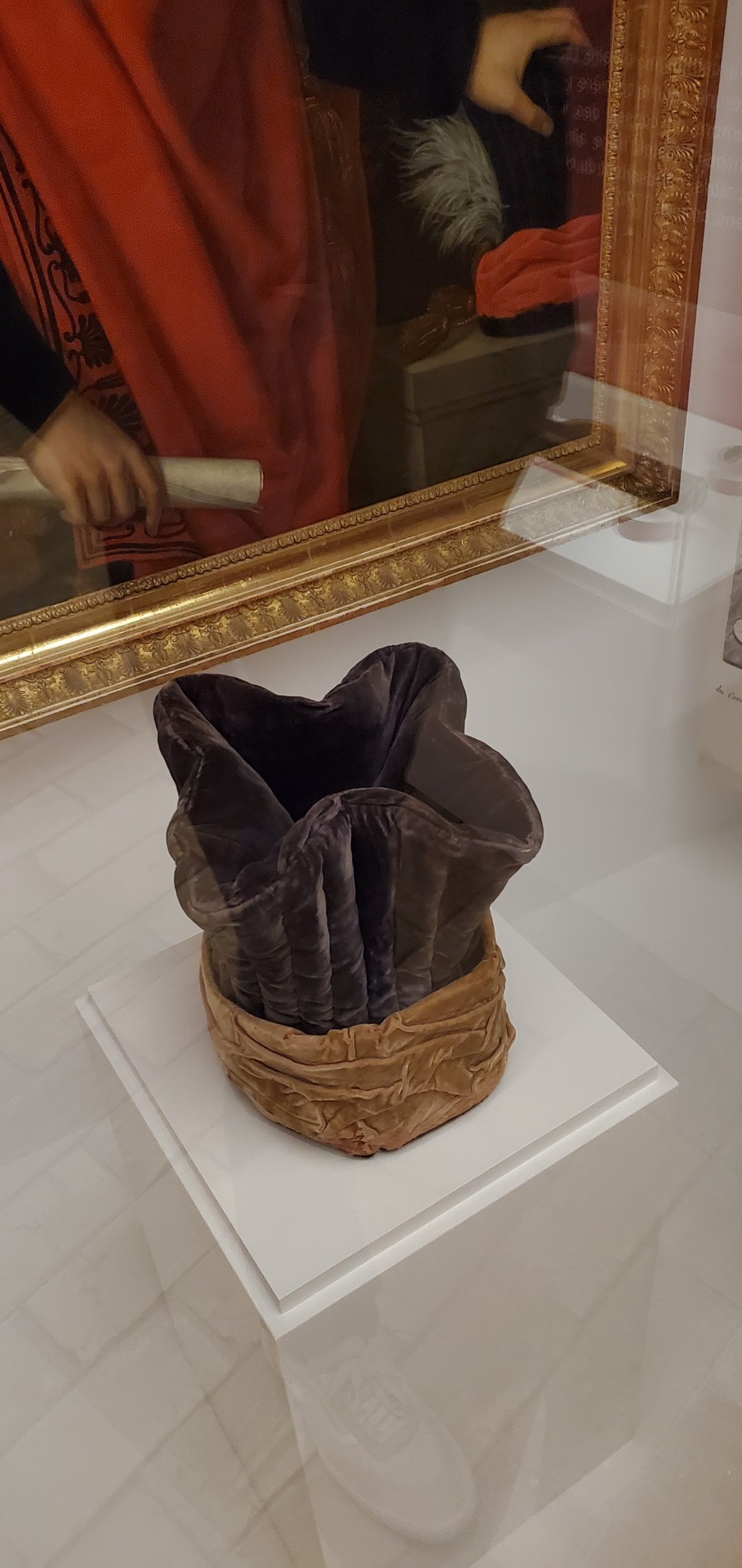
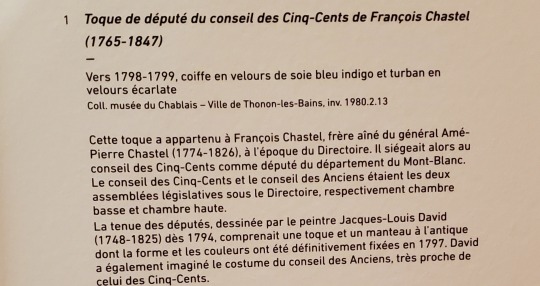
#anyway sorry david but they are even uglier irl#I do want to try it on though#directoire#jacques louis david
79 notes
·
View notes
Text

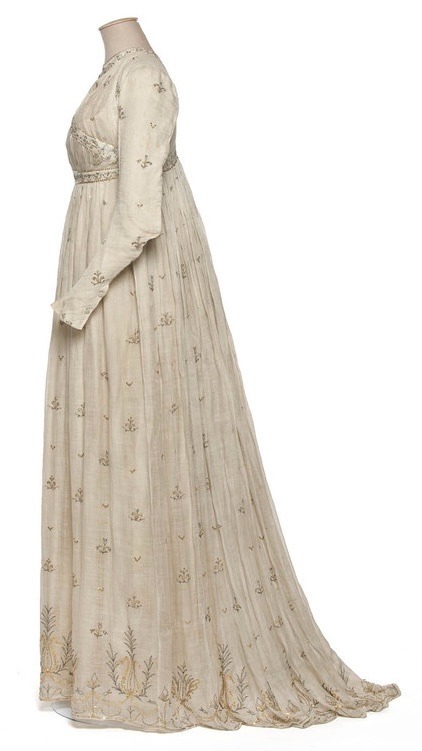

Cream Muslim Dress, ca. 1798, French.
Musée des Arts Décoratifs Paris.
#muslin#cotton#extant garments#womenswear#dress#18th century#1798#1790s#mad paris#musée des arts décoratifs paris#1790s dress#1790s france#diss#french revolution#1790s extant garment#directoire
288 notes
·
View notes
Text



“Les Marionnettes” • 1797 (source)
#i have collected. so many images of incroyables and merveilleuses since this hyperfixation began#and this one is a strong contender for my favorite…just wanted to share it#i feel like i can extrapolate the meaning from looking at it but i rly wish i knew like…the full meaning for sure…#i’ve seen a few other satirical illustrations with the same marionette concept going on with different subjects which is fun#anyway. tags. apologies i might fill up the incroyable/merveilleuse tags i have so many images of them and no one to talk about them with#incroyables#merveilleuses#1700s#frev#french revolution#directoire#incroyables and merveilleuses#incroyables et merveilleuses#art history#french directory#satire#art#history
8 notes
·
View notes
Text
Why was Carnot so vehement in repressing the Babouvists while protecting or even wanting to collaborate with some (theories)?
We have seen here that Carnot was one of the main figures behind the repression of the Babouvists, as seen here: https://www.tumblr.com/nesiacha/767944757763883008/babeuf-et-la-r%C3%A9publique-pers%C3%A9e?source=share, wanting to expand arrests to the maximum while protecting some of the Babouvists like Felix Le Peletier (a very close friend of Gracchus Babeuf and protector of Babeuf's family after his death), who had an ambiguous political relationship with Carnot to the point where Carnot protected him and sometimes wanted them to work together https://www.tumblr.com/nesiacha/770487228804759553/f%C3%A9lix-lepeletier-de-saint-fargeau-un-personnage?source=share. If you want to know more about Gracchus Babeuf, including some of my theories, please consult here https://www.tumblr.com/nesiacha/768437156389715968/in-honor-of-gracchus-babeufs-recent-anniversary?source=share, and feel free to correct me, I’m not infallible.
First theory.
At first glance, this seems implausible. And it is indeed a mystery. However, I believe there are some theories that might explain why Carnot was truly after Gracchus Babeuf. Babeuf was one of those who wanted a certain redistribution of property, especially in the agrarian sense (though this is still unclear, and we can’t really talk about communism because Babeuf seemed unaware of the rise of capitalist societies). However, he is one of the rare revolutionaries who began to advocate for the redistribution of property rights.
One of the major revolutionaries who also started theorizing the right to redistribute property was Momoro. Momoro, along with Ronsin, was one of the leaders of the Hébertists. In fact, Momoro had issues with this in Normandy. Here is an excerpt: “On August 30, the Directory of the Department of Paris sent him, accompanied by a certain Jean-Michel Dufour, representing the Commune, to supervise mass levies in Normandy. They arrived in Bernay on September 7, where Momoro immediately made a vehement speech to the assembly of the Department of Eure. On this occasion, they distributed copies of the Declaration of the Rights of Man and Citizen, with two additional articles of their own, sowing doubt about the inviolability of private property, which, according to them, was ‘guaranteed until the nation has established laws on the matter.’ This, of course, sparked a fierce reaction from the rural population, very attached to land ownership! The next day, they were ‘booed, insulted, disarmed,’ and treated as ‘incendiaries and seditious.’ They owed their safety only to the authority of the president of the Department’s assembly, the Girondin deputy François Buzot, who was eager to restore peace to his district. Freed, they were escorted to Lisieux. The incident made waves in the department and had some repercussions in Paris, especially under Buzot’s influence, who was determined to make Momoro pay for the disorder caused in his district. In the October 12 session of the newly established National Convention, he personally attacked ‘the man I saved from the fury of the people, to whom this wretched man preached the division of land.’ Momoro and Dufour were recalled to Paris, and on September 23, the department’s public prosecutor thanked the Minister of the Interior, Jean-Marie Roland, as these individuals ‘had conducted themselves in a manner more likely to incite trouble than to propagate respect for property and personal safety.’” (Excerpt from Jean-Pierre Duquesne, confirmed by Grace Phelan since Jean Pierre Duquesne is not reliable at times but Grace Phelan does more correct work ).
In fact, those who proposed any significant challenge to property rights were often put in the minority, even within the Enragés or Hébertists, who focused more on economic issues like the maximum price law. There was a real fear of any attack on property rights, a fear heavily played upon by the Directory, including by Sieyès. One pretext was the closure of the neo-Jacobin club, which gathered figures like Prieur de la Marne, Xavier Audouin, Topino-Lebrun, Felix Le Peletier, Victor Bach, Antonelle, Jean Baptiste Drouet, René Vatar, and adjudant Jorry, among others. Following Victor Bach’s speech and the resurgence of the left in 1799, Poultier in his journal L’Ami des lois accused Victor Bach of advocating for an agrarian law. According to Bernard Gainot’s investigation into Victor Bach’s mysterious death, this led to a "Jacobine conspiracy" being staged by Sieyès and Lucien Bonaparte. The speech of Bach, as interpreted by his critics (presenting a “project for a constitution” which proposed a social program close to Babeuf’s system), was a true provocation. It provided conservatives with the perfect opportunity to demonstrate to the majority of deputies (who held police powers over the Tuileries buildings, including the Manège hall) that the neo-Jacobins, contrary to their legalistic demonstrations, only sought the overthrow of the Constitution of Year III and the abolition of private property (or more precisely, a "leveling" of wealth). By wielding the "red peril" scare, this provided an opportunity to close the Manège Hall and ruin the democratic strategy gathered around the Journal des Hommes libres, which aimed to unite militant networks from Paris and the provinces to form a majority in the Councils capable of gradually amending the Constitution of Year III into a "representative democracy."
What is the link to Carnot? Simply that Carnot was maybe likely part of this larger political class, more numerous than we once thought (without excusing Carnot, of course, and avoiding the false excuse of "it was his time"), which feared the agrarian law. Gracchus Babeuf had promoted this law a few years earlier, while Felix Le Peletier was more vague about it, perhaps intentionally, to better rally people, whether on property rights or progressive taxation, even though reform demands were there. (Felix Le Peletier later used the same tactic in the Manège club, where Victor Bach was more precise in his demands, showing Felix Le Peletier to be more prudent or strategic in gathering support.) Therefore, for Carnot, Felix Le Peletier, by his attitude, was less "suspicious" than Gracchus Babeuf.
Second theory.
The second theory I find plausible: Babeuf’s proximity to the Hébertists (Gracchus Babeuf had connections with many left-wing figures, including Albertine Marat, Robert Lindet, Jean-Paul Marat, the Robespierrists such as the Duplays, and even the widow of Chaumette, Pierre-Gaspard Chaumette, Jean-Nicolas Pache, former mayor of Paris, and even people like Vadier). Among these Hébertists, some had problems with the Committee of Public Safety, the General Security Committee, or the Convention. Two names that came up are Clémence and Marchand, who were imprisoned and later released in Year II. Joseph Bodson, one of Babeuf’s most important “lieutenants,” was a fervent Hébertist who resented members of the CPS, including Robespierre, for having executed Chaumette and Hébert (while Gracchus Babeuf became a Robespierrist at the end of his life). Rossignol, one of Ronsin's friends, was also involved in the Conspiracy of Equals. At this time, Carnot was part of the Committee of Public Safety. When he saw the names of these individuals again during his time as Director of the Directory, perhaps this raised a "red flag" for him. Here was Gracchus Babeuf, who had once been close to the Hébertists, surrounded by elements that had had conflicts with the government where Carnot held important positions. We know that Carnot was not close to the Hébertists, and vice versa. This likely didn’t help Carnot view Babeuf favorably, as he was surrounded by individuals Carnot mistrusted (it’s not a simple "good Hébertists vs. bad Carnot and CPS members," or good Carnot and CPS members vs Hebertists—it’s more complex).
@aedesluminis mentioned a letter Carnot wrote to Garrau, a very loyal Jacobin who remained a friend of Carnot during the Directory. Garrau warned him about a potential royalist threat, but Carnot replied, dismissing it as no threat and stating he was more concerned about the danger of extremists from the left—the Babeuf faction in this case. We know that Carnot made significant political errors, and one of them was overestimating the danger from the left while underestimating the royalists.
According to historian Claude Mazauric, Carnot was the most fervent advocate of Babouvist repression, wanting to extend many arrests, though it seems he paradoxically protected Felix Le Peletier and other figures. Barras had reservations about this (one of the rare good actions from Barras in this case). However, according to Fouché’s memoirs, Barras might have been more responsible for the repression of the Babouvists than Claude Mazauric suggests. Fouché reportedly convinced Barras that Gracchus Babeuf (who had long since broken with Fouché) was a threat. This is plausible, especially when we realize how much harm Fouché did to the Babeuf family once he became Minister of Police. He listed Gracchus Babeuf’s widow, Marie-Anne Babeuf, in the list of Jacobins to be arrested in 1801, at a time when Jacobins were despised and victims of violence following the royalist-provoked Saint-Nicaise Street bombing. And in 1808, during the Malet Conspiracy, Fouché, now Minister of Police, ordered the arrest of Emile Babeuf, who only escaped because he was abroad due to work, while Marie-Anne Babeuf underwent a harsh interrogation (though she was known for her strong character and probably wasn't intimidated, given that she had survived worse trials, notably under the Directory). It’s chilling to think that, during a time when Gracchus Babeuf mistakenly thought of Fouché as a friend, he once wrote that he trusted Fouché with his children, as you can see in this post here: https://www.tumblr.com/nesiacha/770322937812336640/one-of-the-creepiest-things-among-the-many?source=share.
However, there’s a big "but." For now, I have only the version from historian Claude Mazauric and Fouché’s memoirs, which are sometimes unreliable (understatement). So, while I have no affection for Barras, I’m more inclined to believe Mazauric unless other elements come to corroborate it. Although when Fouché speaks of the agrarian law to scare people, it seems very plausible. Knowing Fouché, who showed no mercy to those who became his enemies (and after all, Gracchus Babeuf publicly denounced him in his journal), this could be true.
Why was Gracchus Babeuf executed along with Darthé?
Gracchus Babeuf, in my view, put forward a defense of rupture, at least initially, as you can see here: https://www.tumblr.com/nesiacha/764082552563761152/three-brave-defenses-by-revolutionaries-tried?source=share. For those who don't want to visit the link, here’s what Babeuf did: He showed remarkable courage, taking full responsibility for the "Society of Democrats," acknowledging all attacks against the Directory, stating, "The decision of the jurors will solve this problem...: will France remain a Republic, or will it return to a monarchy?" Babeuf fought, refused to answer, and contested many points. He was sentenced to death with Darthé (who remained stoic and mute, refusing to answer questions). Some say Charles Germain almost got the death sentence, but he was finally sentenced to deportation .
Gracchus may have been condemned to death as the leader of the Conjuration of Equals. His defense saved many of his colleagues, but it wasn’t the only reason why other co-defendants avoided execution. Babeuf's trial is well-known thanks to Pierre-Nicolas Hésine, a revolutionary who sheltered the Babeuf family during the trial and published Le Journal de la Haute-Cour or L’Echo des Hommes Sensibles et Vrais throughout the trial. The terrible journey in the iron cage from Paris to Vendôme, where the trial took place, moved public opinion. Teresa Poggi, Philippe Buonarroti’s partner, and Marie-Anne Babeuf, who was pregnant, made the journey on foot under arduous conditions for support the two mans.
Antonelle wasn’t idle in trying to save his co-defendants, although he distanced himself from Gracchus Babeuf due to Babeuf’s irresponsible attitude and their differences on certain issues. Gracchus made foolish moves, like leaving a list of people associated with him in his room, which Pierre Serna suggests was child's play for the police to find. According to Laura Mason, the police found hundreds of documents in an apartment near the center of Paris, including underground pamphlets, insurrection decrees, and instructions to confederates to incite rebellion. Gracchus was irresponsible in this regard, which greatly frustrated his more sensible comrade Antonelle. Antonelle distanced himself, particularly on how to achieve the revolution. I simplify, but for this noble revolutionary, the revolution should be saved through the ballot box and by fighting the system from within, though history would prove him wrong. Here's what Antonelle wrote: "The act of insurrection is the dream of a sick man… The more I think about this too frivolous subject, the more I remain convinced that this great conspiracy was reduced to the petty annoyances of a few disgruntled minds, the pastimes of some idle people who shared their thoughts." The problem was also that Gracchus didn’t take the necessary measures for a clandestine operation, inadvertently putting many involved—whether directly or indirectly—in danger.
But Antonelle, in his journal, also fought to save as many of the co-defendants as possible.
Here is an excerpt from Pierre Serna: "He participated in the Vendôme trial against Babeuf’s accomplices and played a key role in saving almost all of the defendants ».
Réal was also active, just like Vatar and Lebois, in defending the co-defendants (Vatar and Lebois had, a few years earlier, campaigned for the release of Marie-Anne Babeuf, who had been arrested for handling the subscriptions of her husband’s journal. Her arrest lasted only two days thanks to them, according to what I understand).
Moreover, among the co-defendants was an important figure who couldn’t possibly be dead, as he played a symbolic and crucial role in being one of the men who arrested Louis XVI: Jean-Baptiste Drouet. Even some reactionaries panicked when they saw his name among the list of co-defendants in the Babeuf trial, even though others supported the accusation.
Here are some excerpts about Jean-Baptiste Drouet: 'The submission of J.-B. Drouet's case to the Legislative Body in the summer of 1796 crystallized the anger of the democrats. From the moment the Council of Five Hundred began debating the inviolability of the deputy, the press entirely lost interest in other aspects of the case. On the day of Drouet’s arrest, the Directory declared that the police had apprehended him in the act of conspiracy. The democrats now demanded evidence that could justify the imprisonment and trial of a sitting deputy. Drouet claimed he had been arrested while meeting political allies to discuss an official letter he was drafting. The police report, his defenders pointed out, confirmed his statement, as it only mentioned the letter from Drouet and commercial documents belonging to the host of the meeting. 'Thus, in the eyes of the commissioner and his assistants, there were no actions, words, or writings that externally indicated any kind of conspiracy; therefore, there was no flagrant crime.' If Drouet had not been arrested in the act of conspiracy, the Directory had violated his inviolability, thus violating the constitution. If the Legislative Body repeated this act by allowing a trial, it would likewise violate the constitution. 'If the constitution is violated by its main guardians, all is lost; for, how can you punish a man who has conspired against the constitution if you are the first violators?' Didn’t the Terror originate from such violations?’
None of the arguments from Lamarque, nor from the other defenders of Drouet, managed to influence the Legislative Body. The Council of Five Hundred allowed the case to go to the Council of Ancients, which voted for a trial and set up a high court authorized to judge a representative of the people. Insulted but not defeated, the democratic press continued to defend Drouet by publishing speeches, letters, and satires. Méhée even offered to defend Drouet, fearing that more qualified men, faced with the threat of royalist violence, would hesitate to offer their services.
While the democrats focused on the trial, news spread that Drouet had escaped and disappeared. Drouet was able to flee because his case had become too embarrassing for the Directory. The Directory, which had arrested the conspirators denounced by Grisel, had assumed that the case would be widely approved, without considering the obstacle presented by the reputation of the man who had arrested the king at Varennes. Despite irrefutable evidence, despite Grisel’s denunciation, and especially despite the fact that the two chambers of the Legislative Body, by a large majority, had approved the trial, the charges against Drouet continued to provoke the anger of the democrats. Perhaps the Directors hoped that by letting Drouet escape, they would shift attention back to Babeuf, a less credible figure, and thus achieve the glory they expected from his prosecution.
However, the escape came too late. Fearing that the prosecutions against Drouet and the harassment of other democrats signaled a new reaction, and convinced that the Directors had violated the constitution, the democrats were determined to follow the trial of Babeuf closely. This trial, which involved a total of sixty-three other defendants, lasted three months, from the winter of 1796 to the spring of 1797, and became a fierce battle between the Directors and their democratic opponents. During longer and more radically covered proceedings than any other trial during the French Revolution, each side accused the other of betraying the promises of the Revolution, presenting its members as the heralds of the only true Republic.' (Excerpt from the article by Laura Mason, "After the Conspiracy: the Directory, the Press, and the Affair of the Equals")
So here we see that the press, the impact of the democrats, and certain prisoners influenced the judgment, in addition to Gracchus’s defense. I think we can now understand why only Gracchus and Darthé were executed. Between Gracchus’s defense, where he fought fiercely to at least save as many of his colleagues as possible, and Darthé, who was stoic and did not respond (Gracchus and Darthé knew they were going to die, as they spent their time sharpening a blade to attempt suicide), the fact that Gracchus was among those revolutionaries advocating for the infringement of property rights through agrarian reforms (a small group of revolutionaries who scared many political factions, whether in 1789, 1792, or even more so under the Directory) likely worked against him.
As for Carnot, the fact that Gracchus was part of this group of revolutionaries who surrounded themselves with people who had had problems with the Committee of Public Safety in 1794, as we saw, must have made his case even more difficult in Carnot’s eyes. Nevertheless, even in his repression of the Babouvists, Carnot did try to save some revolutionaries, as we saw in the case of Félix Le Peletier, which is to his credit.
What I found admirable in Gracchus, however, is that while he had every right to be angry with Carnot, especially regarding the terrible ordeal of the iron cage in Paris during the Vendôme trial, Babeuf refused to lump Carnot together with Barras and others. Gracchus only made a few moderate criticisms of him, even though he had every right to be furious. I feel that Gracchus, though unable to forgive, could understand someone who committed condemnable acts, provided that person was devoted to the Republic, which was the case with Carnot, whereas Gracchus never forgave people like Tallien, Barras, or Fouché and denounced them rightly and loudly.
After the repression of the Babouvists, according to Mazauric, Carnot, though conservative on many issues, slowed down the repressive zeal of Merlin. I think Carnot realized he had made a grave mistake. But we cannot know for sure unless we contact a good medium.
At the bottom is the screenshot that @aedesluminis found from Fouché’s memoirs about Babeuf and Barras

P.S:Feel free to contradict me or add theories again because it's interesting to add evidence or discuss it.
8 notes
·
View notes
Text
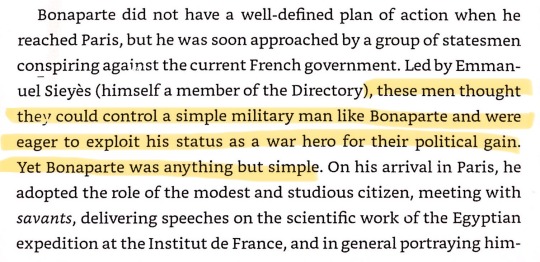

Save me un-manipulable man, underestimated calculating man save me
#Napoleon#napoleon bonaparte#Emmanuel Sieyès#Sieyès#directoire#directory#Brumaire#napoleonic era#napoleonic#first french empire#french empire#history
22 notes
·
View notes
Text

Portrait of Renée Vivien by Otto Wegener circa. 1900
#1900s#early 20th century#historical costuming#historical fashion#renee vivien#lesbian#women authors#directoire#can’t tell if she’s supposed to be a muscadin or incroyable#well… she’s got her executive power#directoire dress seems to be a common costume around this time#there’s photos of her girlfriend with her also dressed in directoire fashion. but I couldn’t find them in great quality
93 notes
·
View notes
Photo
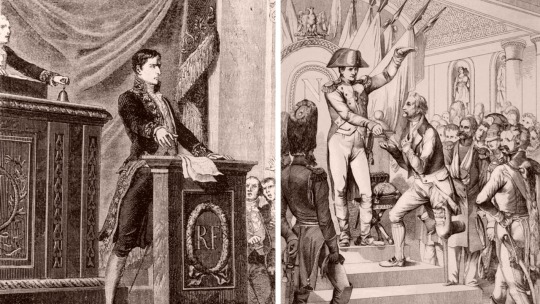
19 mai 1802 : institution de la Légion d’honneur ➽ http://bit.ly/Creation-Legion-Honneur L’article 87 de la constitution consulaire portait « qu’il serait décerné des récompenses nationales aux guerriers qui auraient rendu des services éclatants en combattant pour la république », réservant donc la distinction aux militaires
#CeJourLà#19Mai#Légion#Honneur#Création#Napoléon#Bonaparte#Premier#Consul#Récompense#Distinction#Militaire#Directoire#Consulat#Constitution#histoire#france#history#passé#past#français#french#news#événement#newsfromthepast
5 notes
·
View notes
Text

The French cavalry take the battle fleet caught in the ice in the waters of Texel, 21 January 1795 by Charles Louis Mozin
#Charles Louis Mozin#directoire#directory#french revolution#french republic#versailles#art#painting#Capture of the Dutch fleet at Den Helder
1 note
·
View note
Text
HISTORICAL COSTUMERS I NEED YOUR HELP ! (TL;DR : what does this dress look like from the front ?)

What would this dress (from 1794) look like from the front ? Or IRL ? The ruffled collar makes me think of "chemise à la reine" but the bodice and sleeves are more like a "robe à la turque" (which I've never seen a high-waisted version before) Here are a few pics of dresses with similar shape :

(1784) Notice the ruffled collar with the bow and the ribbon around the waist. Still, the triangular part of the bodice is missing !
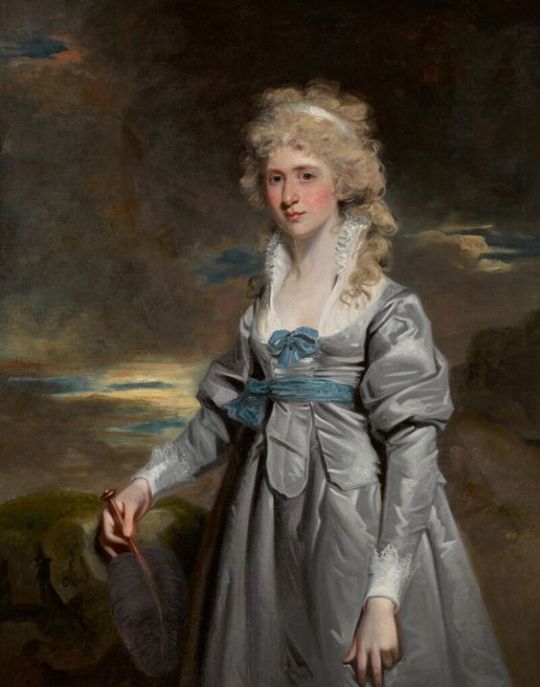
(1791?) Here we have the bow on the collar, the high waist with the ribbon and the sleeves are vaguely similar but it's still not it..
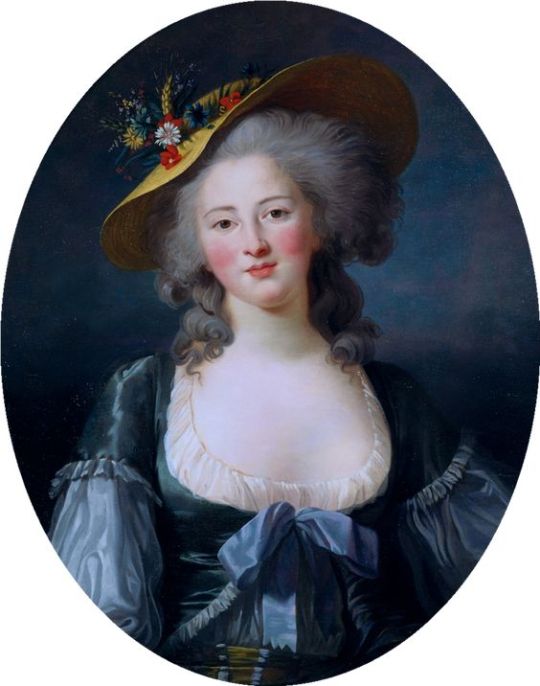
(1782) I think this one is very close. Bow on the collar, triangular bodice, sleeves, but it's still missing the high waist and the ruffles.. Although there is a white layer peeking that's very similar to the ruffles.

(1786) Last but not least, this portrait of Marie-Antoinette has the ruffles, the triangular bodice, somewhat similar sleeves, but it lacks the ribbon around the waist (as in completely around the bodice, it seems like there's something tied at the waist but it's going under the outer layer), the bow on the collar, and the sleeves could definitly be better. However, the waist is pretty high for a robe à la turque.
Anyway, that's what I found, I hope someone can bring a bit of clarity as to what does the 1794 half-mourning dress look like ?
1 note
·
View note
Text

Oil Painting, 1798-1799, France.
By Jacques Louis David.
Portraying Henriette de Verninac in a white dress and yellow shawl.
Musée du Louvre.
#jacques louis david#womenswear#1790s#1790s painting#1790s france#1790s dress#directoire#Henriette de Verninac#musée du louvre#shawl
55 notes
·
View notes
Photo

Built-In Home Office in San Francisco Mid-sized traditional built-in desk with a medium tone wood floor and white walls for a home office design without a fireplace.
0 notes
Text
"If the influence that, I dare say, you have allowed Bonaparte to have over yourselves were seized by some of his successors, and if they became accustomed to this mania of superiority over the government, I ask you, would we have a republican constitution for long?" Xavier Audouin fears that, without a firm takeover by the Directory, "its powers [would be] destroyed by the growing ambition of the military."
Mémoire du citoyen Audouin sur les dilapidations,Milan, 5 nivôse an VII(December 25, 1798)
#frev#french revolution#directoire#napoleon bonaparte#xavier audouin#jacobin#néo jacobins#history#france#quotes
9 notes
·
View notes